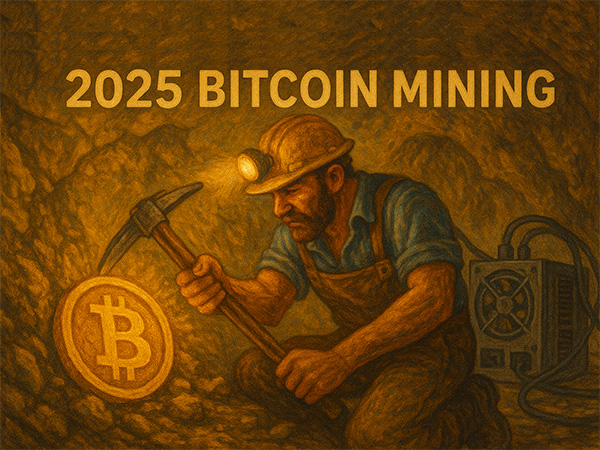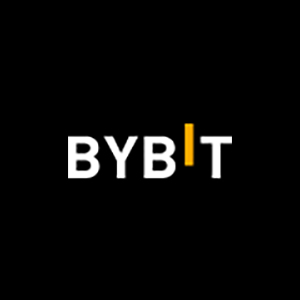Bitcoin Mining Beginner's Guide: 2025 Industry Survival Handbook

After Bitcoin's fourth halving in 2025, the mining industry has developed unprecedented levels of specialization and institutionalization. With the hashing power reaching a historic high of 600 EH/s, the challenges and opportunities facing individual miners have fundamentally changed. This guide will analyze the $27 billion industry’s current state from three dimensions: technological evolution, economic models, and practical strategies for beginners.
Hardware Selection: Efficiency Determines Survival
The mining hardware market in 2025 has fully entered the 3nm chip era, and energy efficiency has become the core competitive metric. Bitmain's latest Antminer S21 Hydro model achieves an industry breakthrough with 16 J/TH, but its high price of $6,800 sets a barrier for many retail miners. Notably, the second-hand mining hardware market remains active — the S19 series, launched in 2024, is now circulating between $1,200 and $1,800, still economically viable in regions with electricity prices under $0.06/kWh. Polaris Mining's Q2 2025 report indicates that using refurbished equipment extends the average ROI cycle to 23 months, 8 months longer than with new machines.
Energy Strategy: From Cost Center to Profit Engine
Electricity costs account for 78% of mining operational expenses in 2025, prompting miners to explore innovative solutions. Small and medium-sized mines in Texas are using dynamic load response systems, selling hash power during peak grid periods to capture premiums and lowering their electricity costs to $0.028/kWh. In renewable energy, African solar mining farms saw a 210% year-on-year increase in installed capacity, but utilization remains at 58% due to limitations in storage technology. A key point for beginners: in 2025, the EU's carbon border tax now covers Bitcoin mining, with a €89 surcharge per ton of CO₂ emitted.
Pool Selection: Transparency Revolution
After the hash power monopoly crises of 2022-2024, the mining pool market in 2025 emphasizes decentralization and transparency. Pools using the Stratum V2 protocol account for 65%, allowing miners to choose their own transaction packaging. F2Pool and Foundry USA still control 38% of the market, but the emerging Ocean Pool has gained favor among technical miners with its open-source monitoring system. Data shows that choosing a medium-sized pool (with 5-15% of hash power share) provides 23% higher stability in returns compared to top-tier pools.
Cloud Mining: Opportunities and Pitfalls
The regulated cloud mining contract market grew to $4.9 billion in 2025, but regulatory discrepancies remain significant. SEC-registered platforms in the U.S. must disclose the actual source of hash power and mining farm operation data, while some offshore platforms still face allegations of overselling. Beginners should pay close attention to three key factors: the alignment of contract terms with Bitcoin's halving cycles, the transparent calculation of daily earnings, and the fairness of early termination clauses. Notably, 63% of cloud mining-related complaints in Q1 2025 involved false advertising of hash power.
Tax and Compliance: The Global Challenge
Bitcoin mining's tax treatment in 2025 is showing signs of fragmentation. The U.S. IRS classifies miners as self-employed and subjects them to a 15.3% self-employment tax, while Singapore treats small-scale miners (<10 machines) as individual investors. The EU’s MiCA regulations require all mining pools to complete KYCM (Know Your Miner) certification, affecting anonymous mining operations. Professional tax software like CryptoTaxMiner can automatically calculate electricity cost deductions, saving up to 27% in taxes in regions like Texas, where full deductions are allowed.
Geographical Strategy: Follow the Policy
The mining landscape in 2025 presents new trends: the Middle East attracts 18% of global hashing power due to cheap natural gas and lenient regulations, while Russia sees a 42% drop in mining farm numbers due to political isolation. Paraguay’s legislative innovation is noteworthy — the country has designated Bitcoin mining as a strategic industry, offering a 10-year tax exemption and a special electricity rate of $0.03/kWh. However, beginners should be aware of hidden costs: equipment depreciation in tropical regions is 40% faster than in temperate zones, significantly impacting long-term profitability.
Risk Management: The New Hedging Era
Professional miners in 2025 generally adopt a triple-hedging strategy: power derivatives (e.g., Luxor’s HR futures) to guard against difficulty fluctuations, electricity forward contracts to lock in energy costs, and periodic hedging of Bitcoin output. Data shows that mining farms using hedged portfolios saw a 67% reduction in earnings volatility during the difficulty surge in April 2025. For small-scale miners, participating in automatic hedging programs offered by pools may be a more practical choice.
Second-Hand Market: Hidden Value
The second-hand mining hardware marketplace Hashrate Index’s valuation model in 2025 shows that an 18-month-old miner has a 0.72 correlation with Bitcoin’s price. Savvy buyers focus on three key indicators: maintenance records (especially power module replacement frequency), environmental conditions (temperature and humidity data), and firmware upgrade history. Notably, some Eastern European mining farms have begun offering "trade-in + hash power guarantee" financing solutions, lowering the barrier to equipment upgrades.
Future Outlook: The Technological Tipping Point
2025 may be the last window for personal mining. With R&D costs for chips under 5nm exceeding $2 billion, next-generation mining rigs will be entirely institutionally driven. However, distributed innovation continues — decentralized mining aggregators based on the Helium model are in testing, allowing home miners to share 5G bandwidth in exchange for hash power shares. As this transformation unfolds, beginners need to clearly recognize that Bitcoin mining is transitioning from grassroots entrepreneurship to professional investment, and only those with finely tuned operational skills will continue to profit.
Actionable Advice for Beginners
-
Start small: Begin with 2-3 second-hand mining rigs to test local operating conditions.
-
Choose energy-stable, policy-friendly regions.
-
Join medium-sized pools to balance returns and autonomy.
In this race for hashing power, successful miners are not only technical experts but also energy economists and risk managers. In 2025, Bitcoin’s network will generate 3.125 BTC every 10 minutes, but only the most professional and adaptable participants will continue to claim a share. Remember, mining is essentially a long-term call option on the Bitcoin network, and the hardware is merely the tool to execute that option.
-
Sign Up

OKX
OKX is a leading global digital asset trading platform offering spot and derivatives services for cryptocurrencies.
-
Sign Up

Binance
Binance is one of the world's largest cryptocurrency exchanges, offering spot, futures, staking, and a wide range of digital asset services.
-
Sign Up

Bybit
Bybit is a global cryptocurrency exchange specializing in derivatives, spot trading, and crypto-financial products.
-
Sign Up

Gate.io
Gate.io is a leading crypto exchange offering diverse trading options, low fees, and strong security since 2013.
